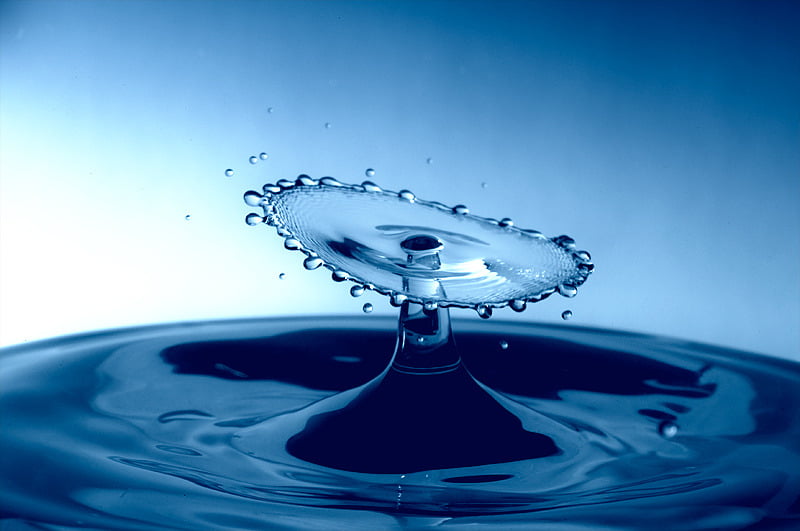When a droplet falls into a pool of similar fluid, one often observes a crown-like impact effect. This student video shows high-speed footage of different fluids crowning and explores the effects of surface tension on crown breakup.
Search results for: “droplet”

Superfluid Dripping
This high-speed video shows superfluid helium dripping and breaking up. Although superfluid has no viscosity, this does not prevent the Plateau-Rayleigh instability from breaking the helium into droplets once the mass of the liquid is too great for surface tension to contain.

Oil Chandeliers
What you see above is a composite of images of an oil droplet falling into alcohol from two different heights. The top row of images is from a height of 25 mm and the bottom from a height of 50 mm. The first droplet forms an expanding vortex ring which breaks down via the Rayleigh-Taylor instability due to its greater density than the surrounding alcohol. The second droplet impacts the alcohol with greater momentum and is initially deformed by viscous shear forces. Eventually it, too, breaks down by the Rayleigh-Taylor mechanism. This image is part of the 2010 Gallery of Fluid Motion. # (PDF)

Microfluidics
The field of microfluidics–where fluids are constrained to the sub-millimeter scale–is increasingly important in fields like chemistry, molecular biology, and microtechnology. At the microscale, surface tension often has greater effects than in our everyday world. This video shows how adding small amounts of a polymer drastically changes droplet breakup.

Zero-G Water Bubbles
Astronaut Don Pettit narrates some of his experiments with air and water droplets in microgravity in this video. The lack of body forces and buoyancy in microgravity means that surface tension effects frequently dominate. Pettit’s demonstrations also involve some fun basic physics with bubble behaviors inside of water droplets. See more of Pettit’s Saturday Morning Science videos for additional microgravity fluid mechanics.

Superhydrophobic Carbon Nanotubes
Carbon nanotubes form a superhydrophobic (super water repellent) surface that interacts with water droplets in interesting ways. The droplet is unable to wet the surface and thus the bounces along. When the impact velocities are too great for surface tension to hold the decelerating mass together, it breaks into many, smaller droplets that also bounce along the surface. # (via @JetForMe and @Vinnchan)

Breaking up in Crossflow
This video shows some instabilities that occur when a liquid jet impinges on a flowing cross stream. Note how the jet breaks down into droplets in a fashion similar to the Plateau-Rayleigh instability but the broken tip remains stable for some time thereafter. #

Rain Drops in Puddles
As those of us in Texas get drenched by Tropical Storm Hermine, it’s worth taking a moment to enjoy the beauty of each rain drop hitting a puddle.

Bouncing into a Pool
Here is another take on what happens when a drop of water falls into a larger pool.

Liquid Umbrella
Droplet collisions, usually with water or milk, are popular with photographers for their artistic value. As stunning as these still images are, high-speed video makes the effect even better.
Photo credit; See also: Liquid sculpture and Flickr